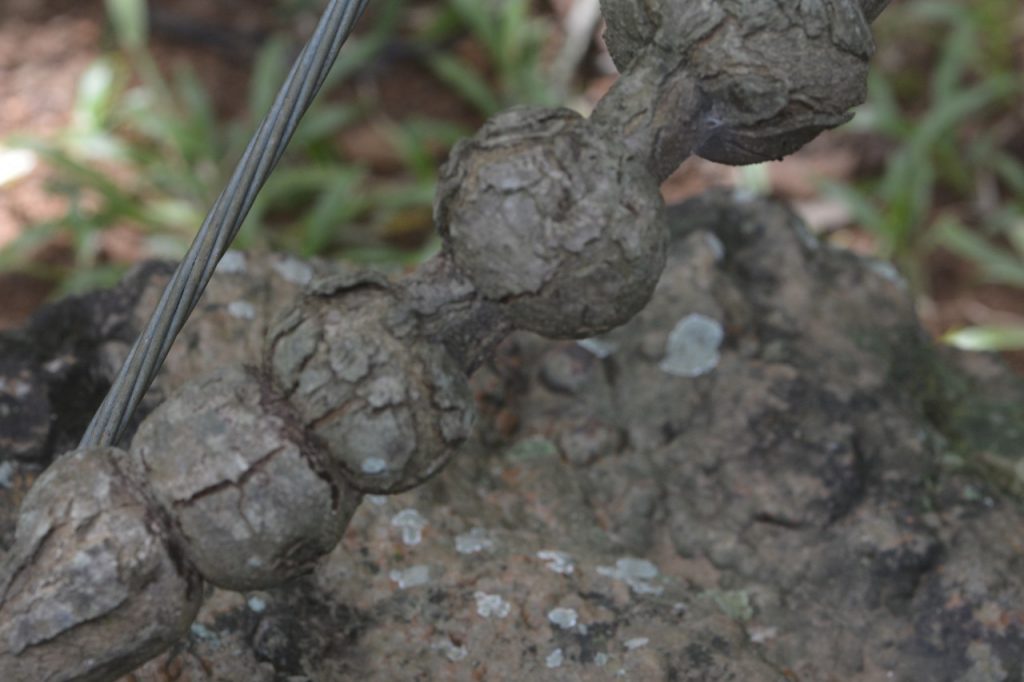- The Emergent Field of Psychedelic Chaplaincy - April 19, 2022
- Preparing Ourselves for the Psychedelic Future with Berra Yazar-Klosinski - November 3, 2021
- Stewarding Psychedelic and Ecological Biospheric Wisdom with Deborah Parrish Snyder - October 13, 2021
Regina Célia de Oliveira is a Brazilian biologist and professor at Brasília University who specializes in the study of Banisteriopsis caapi and other plants that make up the ayahuasca brew. Over the last five years, Regina Célia de Oliveira and her colleagues have traveled throughout Brazil collecting a diverse array of plant samples used by ayahuasca churches and traditional communities. Regina Célia de Oliveira and her colleagues, Julia Sonsin-Oliveira and Camila Behrens, will be presenting about the different types, or “ethno-taxa” of ayahuasca vines at Chacruna’s upcoming conference, Sacred Plants in the Americas II, taking place April 23–25, 2021.
In this interview, Regina Célia de Oliveira shares about the different varieties of the B. caapi vine, the deeply sophisticated knowledge of traditional peoples about these vines, and the importance of protecting these plant species amid ongoing ecological destruction in the Amazon Rainforest. In addition, Regina Célia de Oliveira shares about how different ethno-varieties of ayahuasca might produce teas with different appearances that might have different physiological effects.
Join us at Sacred Plants in the Americas II
Jasmine Virdi: How did you first become interested in studying ayahuasca?
Regina Célia de Oliveira: I attended regular services with religious ayahuasca groups throughout the 1990s. I stopped attending in the early 2000s, when my daughter was born. A few years later, when I was working as a professor in the Department of Botany at the University of Brasilia, a representative from one of the ayahuasca groups came to visit and showed me photos of two varieties of vines used for the production of the ayahuasca brew. Through this happy coincidence, my current research project was born.
In my research, I use the term “ethno-taxon” (plural “ethno-taxa”) to designate different varieties of plants recognized by traditional communities. The ethno-taxa of ayahuasca originally photographed by my visitor were “Caupuri” and “Tucunacá,” morphologically very different plants and easy to distinguish. Caupuri has enlarged, spherical knots along the stem, giving it the appearance of a rosary, while the Tucunaca stem is much smoother. Looking at the photos, they seemed to be different species, but taxonomic studies to date have classified both of these divergent types within the species of Banisteriopsis caapi. At that point, I decided to study the ethno-taxa of ayahuasca in greater depth, inviting several colleagues to get involved, including Camila Soares Braga Behrens and Julia Sonsin-Oliveira.
JV: Taxonomically speaking, Banisteriopsis caapi is part of the Malpighiaceae family, but how many known types of B. caapi are there?
RO: Beginning my study of Banisteriopsis caapi by reviewing the available literature, I was impressed with the tremendous number of ethno-taxa associated with the species. Caupuri and Tucunacá are just two examples of more than 30 named ethno-taxa cited in the literature. In addition to the large number of ethno-taxa recognized by traditional communities, I found considerable disagreement among taxonomists as to the status of the species Banisteriopsis inebrians. This scientific name was first given to an ethno-taxon recognized by Indigenous shamans from Colombia. Among the small group of taxonomists who have studied this vine closely, some accept the possibility that certain ethno-taxa may correspond to different botanical species. However, other researchers do not accept B. inebrians as a legitimate species, considering it to be a variety of B. caapi. This lack of agreement among specialists is not uncommon in botany, and indicates that the species B. caapi needs to be reassessed with modern techniques.

In addition to the diversity of forms recognized within B. caapi by different traditional peoples, there are many references to other genera of Malpighiaceae used in the production of the ayahuasca brew, such as Tetrapterys species. Moreover, so far, I have only talking about varieties of the vine used for the production of the brew. Another level of complexity and diversity is introduced when one considers the multiple botanical species that are cited as admixtures in the ayahuasca brew by different cultures, including leaves from one or more species of leaves of Psychotria (Rubiaceae family), Diplopterys cabrerana (Malpighiaceae), tobacco (Nicotiana sp.) and other Solanaceae including Brunfelsia spp. and Brugmansia spp. (Solanaceae). These various admixtures contribute tryptamines or other alkaloids that alter and intensify the effects of the beta carbolines present in B. caapi and the like. So, in this sense, ayahuasca encompasses a wealth of species, forms, and modes of preparation.
JV: What do Indigenous groups and other sources say about the different types of ayahuasca? You conducted a study interviewing 50 informants in different parts of Brazil and the Amazon Rainforest. What did you learn about the different varieties of ayahuasca?
The knowledge of traditional peoples about the ayahuasca vine is very sophisticated, and we are not talking just about Indigenous people here, since rubber tappers and other people linked to various ayahuasca religious groups in Brazil also maintain much knowledge.
RO: The knowledge of traditional peoples about the ayahuasca vine is very sophisticated, and we are not talking just about Indigenous people here, since rubber tappers and other people linked to various ayahuasca religious groups in Brazil also maintain much knowledge.
Working with the Brazilian religious groups that use the ayahuasca tea, we are building a database of the different varieties of the vine they use and maintain. All of the established ayahuasca religions in Brazil cultivate the plants they use in producing the sacred beverage. We interviewed 50 people from these religions, mostly “feitores,” that is, those responsible for the preparing the ayahuasca tea. We collected voucher samples for our studies, which are deposited in the herbarium. An herbarium is rather like a plant library, a collection of dry plants stored in such a way that they are preserved indefinitely. Most herbaria are open for purposes of consultation and comparison by specialists, and today, many provide access to their collections over the internet.
Different ayahuasca religious groups in Brazil not only recognize but also cultivate the ethno-taxa used in preparing the tea. They can describe the morphology of these plants in great detail, and are often able to locate native populations in the dense Amazon forest. Additionally, they are able to describe the physical and chemical characteristics of the tea from different ethno-taxa.
Different varieties of vine that produce denser or more dilute teas, a more or less bitter flavor, greater or lesser physiological effects (such as vomiting and diarrhea), with colors varying from brown to light yellow. Some Indigenous people relate the different effects and characteristics to color shades or certain animals.
I was able to observe an intense exchange of knowledge, mostly through oral transmission, although there are some well-organized written documents, among different ayahuasca communities, and a growing awareness of the importance of active preservation of these plants and the associated knowledge.
Through this project, I saw an intense exchange of plants and knowledge, still orally, but there are already well-written documents by the ayahuasca churches and a growing awareness of the need to keep plants and traditional knowledge active. I was able to observe an intense exchange of knowledge, mostly through oral transmission, although there are some well-organized written documents, among different ayahuasca communities, and a growing awareness of the importance of active preservation of these plants and the associated knowledge.

JV: Can you tell us more about the so-called ayahuasca analogues?
RO: Ayahuasca analogues are species that have the same active ingredients as ayahuasca, but with no record of traditional use. In this respect, there has been a certain degree of confusion in the literature, sometimes owing to the lack of thorough bibliographic review. For example, some cases where species that are considered by some as “analogues” are, in fact, used traditionally by certain groups.
JV: When speaking about ayahuasca, I think that many Western users feel attached to the B. caapi vine as being more than just an ingredient in the brew; rather, there is a view that the particular vine has a spiritual essence that should be venerated. Does it matter to Indigenous groups if ayahuasca is made with other vines in the Malpighiaceae family other than B. caapi?
RO: The fact is that “ayahuasca analogues” are plants with active principles known to scientists, but that traditional people do not use. I do not believe that traditional groups make conscious use of such analogues. But groups that do not care so much about religious aspects, and are only interested in the effect of the brew, might use other species to avoid extractive pressure on natural populations of B. caapi. However, the effects of B. caapi have been known for more than 3,000 years, according to Claudio Naranjo. You would need to be brave to use other plants that have the same active compounds, but which may have other associated and possibly unknown active components that could cause unpredictable reactions in the human organism!
JV: In your 2020 study, you analyzed the concentration of β-carbolines in 176 lianas, including 150 different B. caapi vines. What about the 17 samples of other species? Can you tell me more about chemical variations in the vine?
RO: This was a pioneering study because we analyzed plants samples from known ethno-taxa accompanied by herbarium voucher material; that is, physical collections (usually a branch with leaves, and flowers or fruits when possible) stored in an herbarium to testify to the identity of each plant analyzed. As we are concerned with the delimitation of the species Banisteriopsis caapi, we need to understand the entire Banisteriopsis genus; if anything, to make sure that none of the ethno-taxa belong other species or genera. After all, if no one collects samples of the ethno-taxa for a botanist to analyze, who can guarantee that they are all B. caapi?
I would like to point out that this project is part of a larger series of studies underway at the University of Brasilia. We will have a broad database to analyze more confidently the delimitation of B. caapi and the meaning of the various ethno-taxa.
Discover Indigenous Reciprocity Iniciative of the Americas
JV: In your study, B. caapi samples were classified into four groupings. What were these and how did you differentiate them? How can you distinguish between different ethno-taxa of the vine?
RO: This study is currently in the process of publication, but I can give away this “spoiler”: the differentiation is made according to both stem features and the tea itself. The main groups are fairly easy to recognize, such as the Caupuri group (with round, swollen knots along the stem) and a group with smoother stems.
JV: In all, you analyzed 33 different ayahuasca brews. Where did the brews come from? Did you examine any brews from Indigenous sources?
RO: So far, we have not analyzed the ayahuasca brew made by Indigenous groups, only from religious groups. There are variations in the concentration of different brews, because there are different modes of preparation and administration during religious services. Often, groups that produce a less concentrated tea deliver more of the drink than those that produce a more concentrated tea.
Some groups now prepare a very concentrated brew to facilitate transport, which is later diluted. Our initial idea was that different preparations of tea would show varying different chemical composition depending on the type of vine used. We have not yet been able to show any such correlation, but we have analyzed only those substances that are known to produce an entheogenic effect. Other substances may be present that have not even been described!
JV: Can you tell me more about how you analyzed these samples?
The samples are being analyzed using multiple approaches: phytochemical, morphological, anatomical and molecular analysis, and sequencing of DNA and RNA fragments, building a broad database so that we can understand the ayahuasca vines in detail.
RO: The samples are being analyzed using multiple approaches: phytochemical, morphological, anatomical and molecular analysis, and sequencing of DNA and RNA fragments, building a broad database so that we can understand the ayahuasca vines in detail. I’d like to highlight our analysis of stem anatomy. The main distinguishing characters among ethno-taxa involve the stem. For this reason, we are investigating this aspect in detail. Our results confirm the variations reported by ayahuasca communities.
Support the Eagle and the Condor’s Ayahuasca Religious Freedom Initiative
JV: Were there differences between wild versus cultivated samples?
RO: Banisteriopsis caapi contains alkaloids from the β-carboline group, mainly harmine, harmaline, and tetrahydroharmine (THH). These alkaloids inhibit the enzyme monoamine oxidase (MAO), responsible for metabolizing tryptamine-based neurotransmitters like serotonin. Psychotria viridis contains N, N-dimethyltryptamine (DMT), a serotonin analog that can produce an intense entheogenic effect. When ingested orally, DMT is normally oxidized by MAO, rendering it inactive. However, the β-carbolines contained in ayahuasca vine inhibit MAO, synergizing the psychoactive effect of DMT. Thus, theoretically, a tea made only of the vine would not have an entheogenic effect.
However, harmine and harmaline have been reported to produce an entheogenic effects in humans, probably due to agonist-antagonist interactions with serotonin, dopamine, and other receptors. The activity of THH in ayahuasca, on the other hand, is apparently due to its weak inhibition of serotonin reuptake.
Many report that ayahuasca tea is “better” when made with native vines. Our results show that the harmine concentrations are much higher in the native material. However, we found higher concentrations of THH in vines grown here in the Federal District than in samples from the Amazon. We have some conjectures to explain these results, but they are not conclusive.
JV: What are the subjective effects of drinking different types of ayahuasca?
However, there is wide agreement among informants that teas made from certain ethno-taxa of vines bring out more or less força (power, strength) during the ritual.
RO: This question is very difficult to assess, since the tea is used in religious rituals and there are multiple factors that come into play. We are told that food, for example, can interfere with the effects of the brew. Most churches recommend dietary restrictions three days before and after the ritual. Psychological states are also certainly a major factor, as well as the manner in which the ritual is conducted. However, there is wide agreement among informants that teas made from certain ethno-taxa of vines bring out more or less força (power, strength) during the ritual. Many describe how some vines have variable “cleansing” (vomiting and diarrhea) powers.
Sign up to our Newsletter:
JV: What do the “types” of B. caapi mean for the sustainability of the vine?
RO: The results of our studies show that Banisteriopsis caapi is a species encompassing distinctive morphological and chemical types as recognized in the traditional knowledge of distinct ethno-taxa, cultivated and used in different ways by the different cultural groups who use ayahuasca. The conservation of this biological and cultural variability needs to be prioritized by all of us, especially in light of the greater extractive pressure that the Amazon forest and its native peoples have been suffering.
Art by
Take a minute to browse our stock:
Did you enjoy reading this article?
Please support Chacruna's work by donating to us. We are an independent organization and we offer free education and advocacy for psychedelic plant medicines. We are a team of dedicated volunteers!
Can you help Chacruna advance cultural understanding around these substances?





















